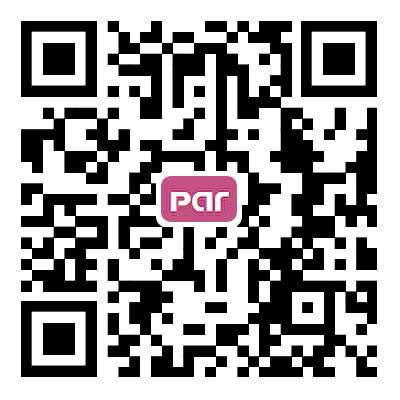REFERENCES
1. Reddy S. Generative AI in healthcare: an implementation science informed translational path on application, integration and governance. Implement Sci 2024;19:27.
3. Memarian B, Doleck T. ChatGPT in education: methods, potentials, and limitations. Comput Hum Behav Artif Hum 2023;1:100022.
4. Barreto F, Moharkar L, Shirodkar M, Sarode V, Gonsalves S, Johns A. Generative artificial intelligence: opportunities and challenges of large language models. In: Balas VE, Semwal VB, Khandare A, editors. Intelligent Computing and Networking. Singapore: Springer Nature; 2023. pp. 545-53. Available from: https://scholar.google.com/scholar?q=Generative+artificial+intelligence:+opportunities+and+challenges+of+large+language+models&hl=zh-CN&as_sdt=0&as_vis=1&oi=scholart. [Last accessed on 14 Nov 2024].
5. De Angelis L, Baglivo F, Arzilli G, et al. ChatGPT and the rise of large language models: the new AI-driven infodemic threat in public health. Front Public Health 2023;11:1166120.
6. Shen Y, Heacock L, Elias J, et al. ChatGPT and other large language models are double-edged swords. Radiology 2023;307:e230163.
7. Raiaan MAK, Mukta MSH, Fatema K, et al. A review on large language models: architectures, applications, taxonomies, open issues and challenges. IEEE Access 2024;12:26839-74.
8. Meyer JG, Urbanowicz RJ, Martin PCN, et al. ChatGPT and large language models in academia: opportunities and challenges. BioData Min 2023;16:20.
9. Hong Y, Hwang U, Yoo J, Yoon S. How generative adversarial networks and their variants work: an overview. ACM Comput Surv 2020;52:1-43.
10. Seth I, Lim B, Cevik J, et al. Utilizing GPT-4 and generative artificial intelligence platforms for surgical education: an experimental study on skin ulcers. Eur J Plast Surg 2024;47:2162.
11. Xie Y, Seth I, Hunter-Smith DJ, Rozen WM, Seifman MA. Investigating the impact of innovative AI chatbot on post-pandemic medical education and clinical assistance: a comprehensive analysis. ANZ J Surg 2024;94:68-77.
12. Skjold-Ødegaard B, Søreide K. Competency-based surgical training and entrusted professional activities - perfect match or a procrustean bed? Ann Surg 2021;273:e173-5.
13. Kotsis SV, Chung KC. Application of the “see one, do one, teach one” concept in surgical training. Plast Reconstr Surg 2013;131:1194-201.
15. Scott MT, Rehman SU, NeMoyer RE, Patel NM. Optimizing surgical education through the implementation of a feedback curriculum. Am J Surg 2022;224:893-9.
16. Park SH. Use of generative artificial intelligence, including large language models such as ChatGPT, in scientific publications: policies of KJR and prominent authorities. Korean J Radiol 2023;24:715-8.
17. Fazlollahi AM, Bakhaidar M, Alsayegh A, et al. Effect of artificial intelligence tutoring vs expert instruction on learning simulated surgical skills among medical students: a randomized clinical trial. JAMA Netw Open 2022;5:e2149008.
18. Singh NK, Raza K. Medical image generation using generative adversarial networks: a review. In: Patgiri R, Biswas A, Roy P, editors. Health informatics: a computational perspective in healthcare. Singapore: Springer; 2021. pp. 77-96.
19. Atkinson CJ, Seth I, Xie Y, et al. Artificial intelligence language model performance for rapid intraoperative queries in plastic surgery: ChatGPT and the deep inferior epigastric perforator flap. J Clin Med 2024;13:900.
20. Seth I, Lim B, Joseph K, et al. Use of artificial intelligence in breast surgery: a narrative review. Gland Surg 2024;13:395-411.
21. Kirubarajan A, Young D, Khan S, Crasto N, Sobel M, Sussman D. Artificial intelligence and surgical education: a systematic scoping review of interventions. J Surg Educ 2022;79:500-15.
22. Guerrero DT, Asaad M, Rajesh A, Hassan A, Butler CE. Advancing surgical education: the use of artificial intelligence in surgical training. Am Surg 2023;89:49-54.
23. Locke S, Bashall A, Al-adely S, Moore J, Wilson A, Kitchen GB. Natural language processing in medicine: a review. Trends Anaesth Crit Care 2021;38:4-9.
24. Brennan L, Balakumar R, Bennett W. The role of ChatGPT in enhancing ENT surgical training - a trainees’ perspective. J Laryngol Otol 2024;138:480-6.
25. Mohapatra DP, Thiruvoth FM, Tripathy S, et al. Leveraging large language models (LLM) for the plastic surgery resident training: do they have a role? Indian J Plast Surg 2023;56:413-20.
26. Lebhar MS, Velazquez A, Goza S, Hoppe IC. Dr. ChatGPT: utilizing artificial intelligence in surgical education. Cleft Palate Craniofac J 2024;61:2067-73.
27. Meskó B. Prompt engineering as an important emerging skill for medical professionals: tutorial. J Med Internet Res 2023;25:e50638.
28. Sevgi UT, Erol G, Doğruel Y, Sönmez OF, Tubbs RS, Güngor A. The role of an open artificial intelligence platform in modern neurosurgical education: a preliminary study. Neurosurgical Review 2023;46:86.
29. Nah F, Zheng R, Cai J, Siau K, Chen L. Generative AI and ChatGPT: applications, challenges, and AI-human collaboration. J Inf Technol Case Appl Res 2023;25:277-304.
30. Shah A, Mavrommatis S, Wildenauer L, Bohn D, Vasconcellos A. Performance of ChatGPT on hand surgery board-style examination questions. J Orthop Exp Innov 2024;5.
31. Araji T, Brooks AD. Evaluating the role of ChatGPT as a study aid in medical education in surgery. J Surg Educ 2024;81:753-7.
32. Eschenbach WJ. Transparency and the black box problem: why we do not trust AI. Philos Technol 2021;34:1607-22.
33. Lee Y, Tessier L, Brar K, et al; ASMBS Artificial Intelligence and Digital Surgery Taskforce. Performance of artificial intelligence in bariatric surgery: comparative analysis of ChatGPT-4, Bing, and Bard in the American society for metabolic and bariatric surgery textbook of bariatric surgery questions. Surg Obes Relat Dis 2024;20:609-13.
34. Oh N, Choi GS, Lee WY. ChatGPT goes to the operating room: evaluating GPT-4 performance and its potential in surgical education and training in the era of large language models. Ann Surg Treat Res 2023;104:269-73.
35. Wu C, Chen L, Han M, Li Z, Yang N, Yu C. Application of ChatGPT-based blended medical teaching in clinical education of hepatobiliary surgery. Med Teach 2024;Online ahead of print.
36. Mirchi N, Bissonnette V, Yilmaz R, Ledwos N, Winkler-Schwartz A, Del Maestro RF. The virtual operative assistant: an explainable artificial intelligence tool for simulation-based training in surgery and medicine. PLoS One 2020;15:e0229596.
37. Fazlollahi AM, Yilmaz R, Winkler-Schwartz A, et al. AI in surgical curriculum design and unintended outcomes for technical competencies in simulation training. JAMA Netw Open 2023;6:e2334658.
38. Ma R, Kiyasseh D, Laca JA, et al. Artificial intelligence-based video feedback to improve novice performance on robotic suturing skills: a pilot study. J Endourol 2024;38:884-91.
39. Yang YY, Shulruf B. Expert-led and artificial intelligence (AI) system-assisted tutoring course increase confidence of Chinese medical interns on suturing and ligature skills: prospective pilot study. J Educ Eval Health Prof 2019;16:7.
40. Jarry Trujillo C, Vela Ulloa J, Escalona Vivas G, et al. Surgeons vs ChatGPT: assessment and feedback performance based on real surgical scenarios. J Surg Educ 2024;81:960-6.
41. Seth I, Lim B, Xie Y, et al. Comparing the efficacy of large language models ChatGPT, BARD, and Bing AI in providing information on rhinoplasty: an observational study. Aesthet Surg J Open Forum 2023;5:ojad084.
42. Guthrie E, Levy D, Del Carmen G. The Operating and Anesthetic Reference Assistant (OARA): a fine-tuned large language model for resident teaching. Am J Surg 2024;234:28-34.
43. Artificial Analysis. Comparison of models: quality, performance & price analysis. Available from: https://artificialanalysis.ai/models. [Last accessed on 14 Nov 2024].
44. Team AP. Artificial intelligence measurement and evaluation at the national institute of standards and technology. Available from: https://www.nist.gov/system/files/documents/2021/06/16/AIME_at_NIST-DRAFT-20210614.pdf. [Last accessed on 14 Nov 2024].








